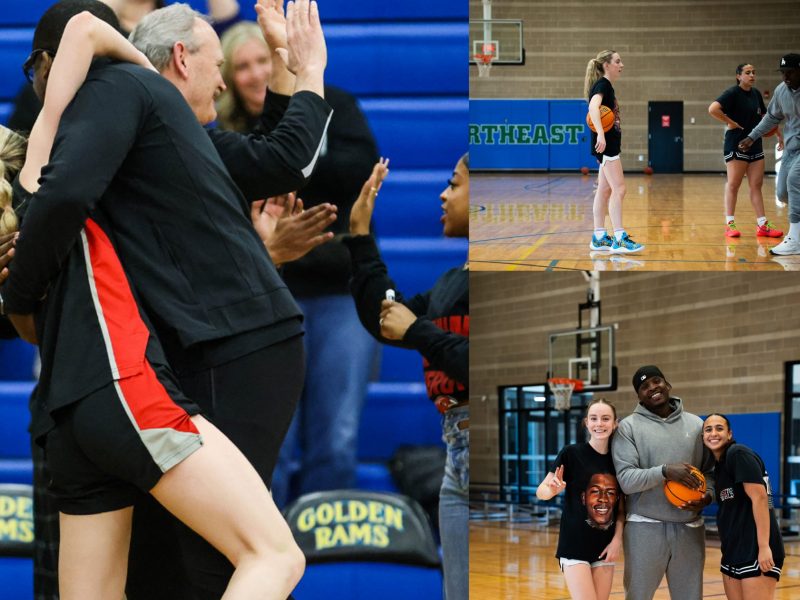
Katie Krebs’ work focuses on forestscapes and other two-dimensional scenes. The exhibit will be open until mid-July.
The art gallery in the Stamp Student Union is an often overlooked detour as visitors wander the building seeking snacks and smoothies.
Program Coordinator for the Union Gallery, Jeff Rhodes, will tell you there are always visual refreshments on view just above the food court, and his goal is to offer exhibits that are worth the diversion.
“Part of our goal is to make this space accessible,” Rhodes said on a recent tour of “AREA,” the gallery’s current exhibition, which runs through July 14.
The accessibility of the gallery has been extended to three local artists whose work Rhodes discovered while perusing the files at the Washington Project for the Arts, a non-profit at the Corcoran Museum seeking to unite artists and local residents.
“It was originally going to be a show of local artists,” Rhodes said of the 15-piece exhibit.
But after choosing the three artists for the show, he noticed a pattern emerging among their work, he said.
“The way they used an illusion, or lack of illusion on surface tied them all together,” Rhodes explained. “They all used surface in an interesting way to address space.”
Upon entering the exhibit, visitors are often drawn first to a multimedia presentation featuring the work of artist Hedwige Jacobs. At first glance, Jacobs’ work appears extraordinarily simple, consisting of plain white paper and penciled drawings. All of her works use a random concentration of color to draw attention to a section of the work; in Drive Through, it is a single red car stationed among an array of haphazardly parked colorless vehicles.
When the viewer looks to a small video screen depicting a copy of the work displayed on the gallery wall, that red car comes alive and drives rapidly around the lot, playfully darting between its unanimated counterparts. The video continues, showing other examples of Jacobs’ lighthearted animations.
“I love the immediate pleasure you get out her work and how she uses animation to show depth,” Rhodes said.
Rhodes said while all the art in the exhibition ties into a common theme of displaying depth on two-dimensional surfaces, artist Kevin Kepple is particularly adept at conveying texture.
Kepple uses Elmer’s glue on sheets of plywood, manipulating the glue before it dries into an array of patterns, usually overlapping circles that give a convincing illusion of depth. Kepple gives each work a distinctive look by using a singular bold color, such as a striking crimson in Bloodshot. The glossy colors draw the viewer to the art, even from a distance, as other aspects of the piece begin to emerge, such as rolling hills of circles that go unnoticed close up.
“Kevin’s kind of a guy’s kind of guy,” Rhodes said. “But his work is sort of intimate.”
The paintings by the third artist, Katie Krebs, feature more muted colors, although her paintings are instantly recognizable as forested landscapes. The landscapes are eerie, sometimes windblown, and Rhodes said concentrating on the forefront of Krebs’ work would be missing the forest for the trees.
“To me, it’s not the landscape or the trees, it’s the space she creates around [them],” Rhodes said.
The Union Gallery shows eight exhibitions each year. Rhodes says some of the most interesting are those allowing submissions from all Maryland students and not only art majors, such as the most recent one, “Unjuried.”
“[‘Unjuried’] brought a lot of students into the gallery that otherwise wouldn’t have come in,” Rhodes said. “People really enjoyed going to the show. We had 80 pieces [on view], so there was a lot to find.”


